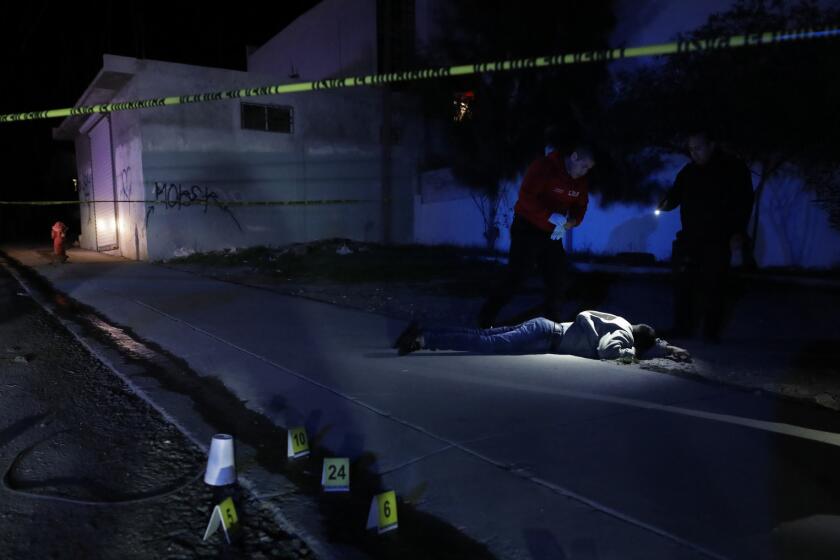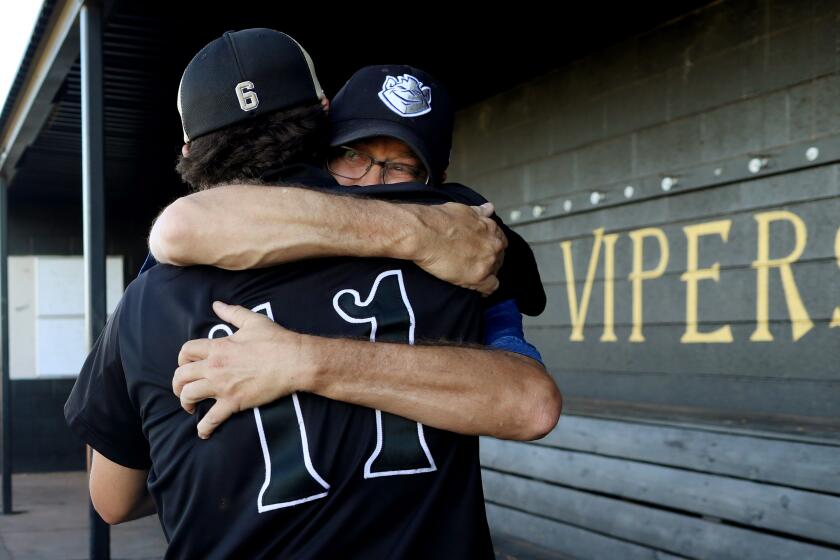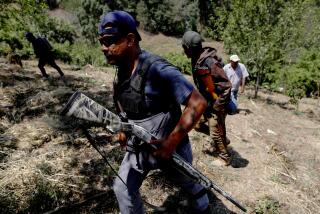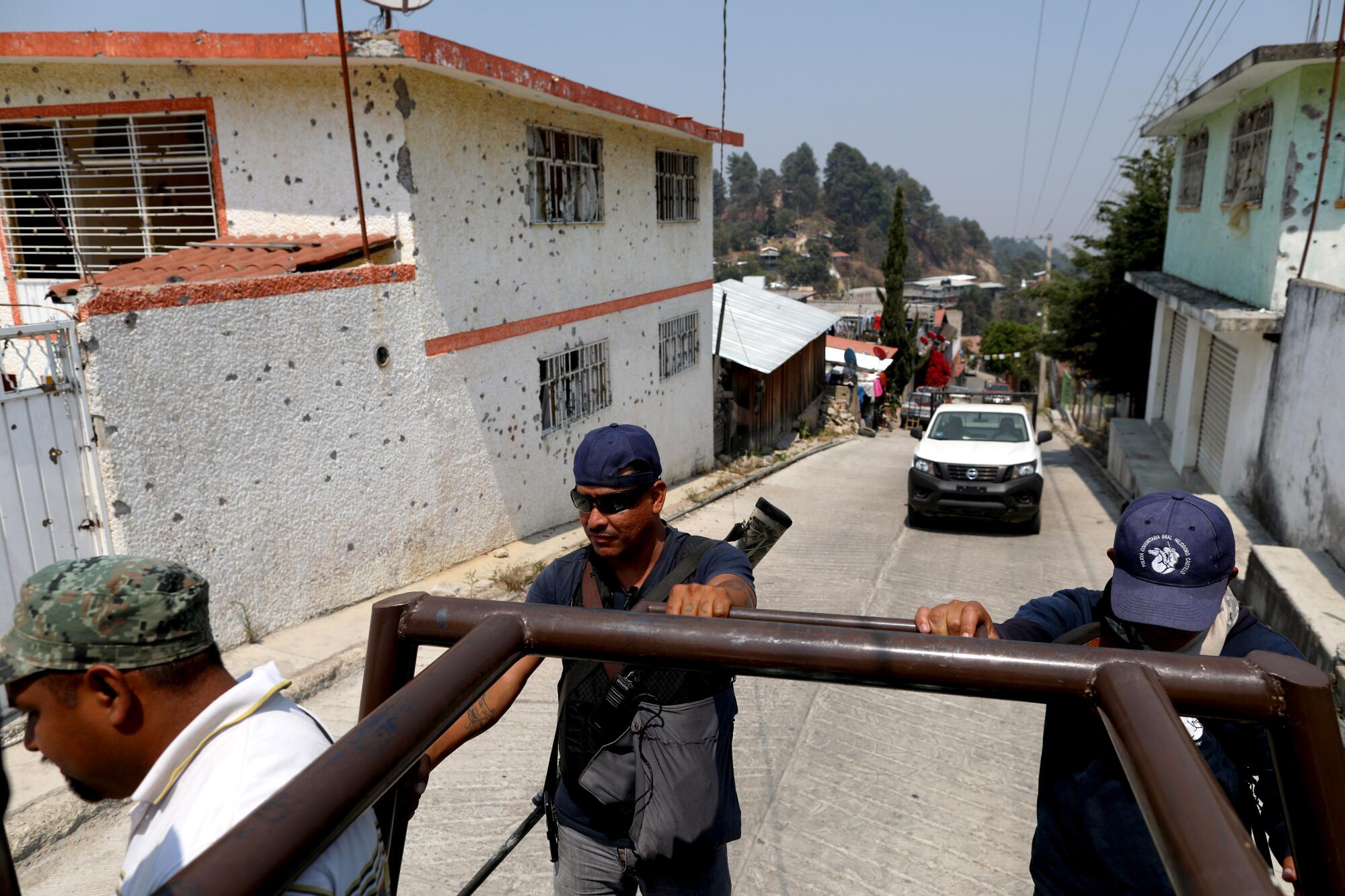
FILO DE CABALLOS, Mexico — The sun had not yet risen when dozens of gunmen stormed into the town of Ocotito in southern Mexico and started shooting.
Salvador Alanis Trujillo tried to fight back, but his shotgun was no match for their assault rifles. So he and his family fled.
This rugged stretch of Guerrero state had always been a little lawless, home to cattle rustlers and highway bandits. But by the time the gunmen seized Ocotito in 2013, the region was overrun with dozens of criminal groups battling for territory.
There was another key difference: The criminals were now packing AR-15s, AK-47s and other weapons of war.
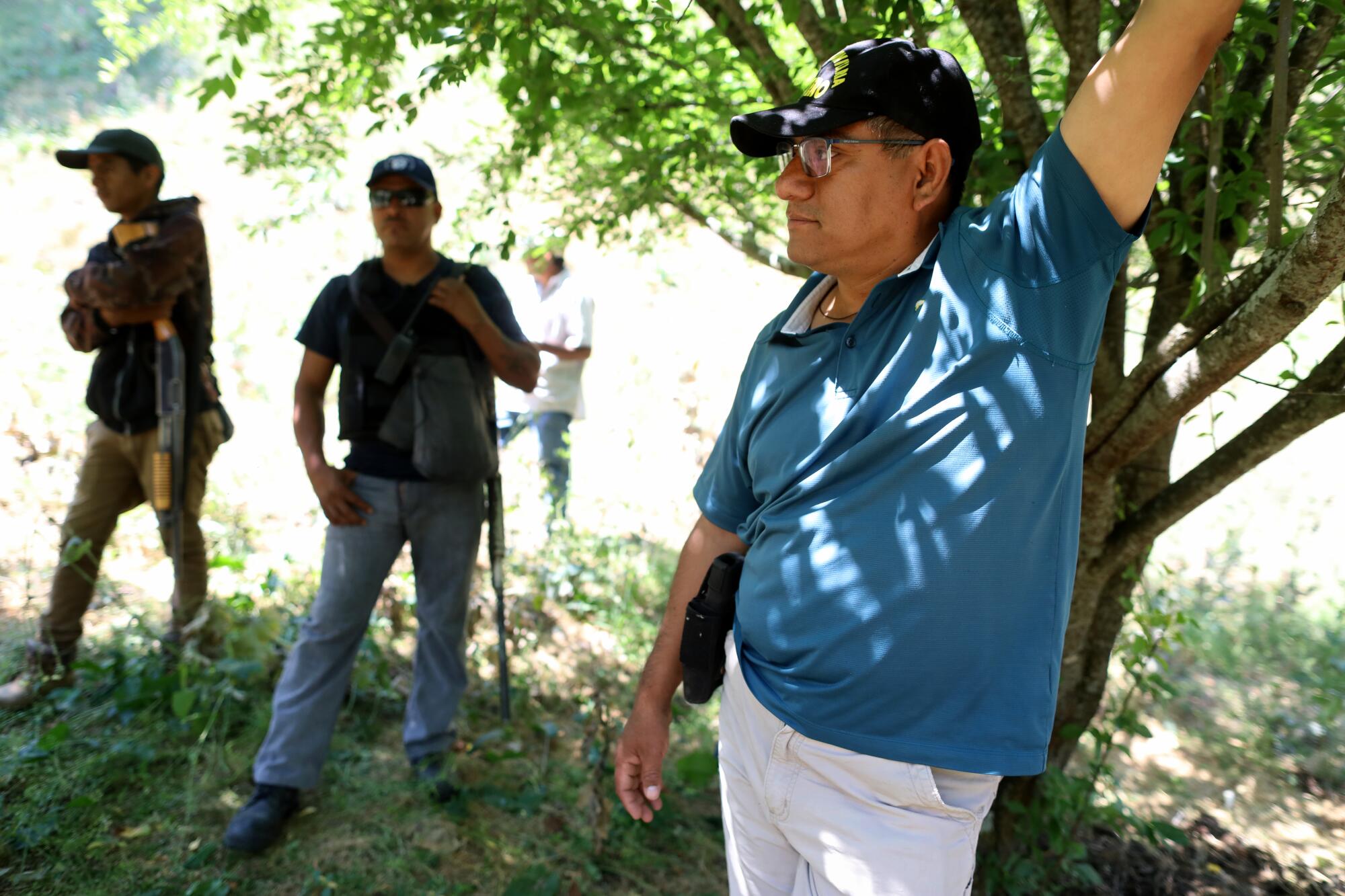
Mexico is in the grips of a deadly arms race.
It began as part of an escalating conflict among major criminal groups, and it accelerated in 2006 after Mexico’s military went to battle with the cartels.
Today, millions of weapons are in private hands — in direct violation of Mexico’s strict gun laws.
Some of those firearms once belonged to the military or police and were sold into the underworld. But the vast majority were smuggled from the world’s largest gun market: the United States.
The arms buildup has helped fuel record levels of violence. Last year, Mexico saw 20,005 gun homicides — nearly seven times as many as in 2003.
Impunity in Mexico, where 95% of killings go unpunished, has spurred more people to take up arms — and carry out their own justice.
After Alanis was forced to abandon his property, which he had bought with savings from a stint as an auto mechanic in North Carolina, he went to state authorities for help.
When none arrived, he and others who had been displaced formed what they describe as a community police force — and began acquiring the most powerful guns available on the black market.
The group’s aim is to eventually take back Ocotito, a town of 6,000 at the base of a verdant mountain range, using an arsenal that includes dozens of machine guns.
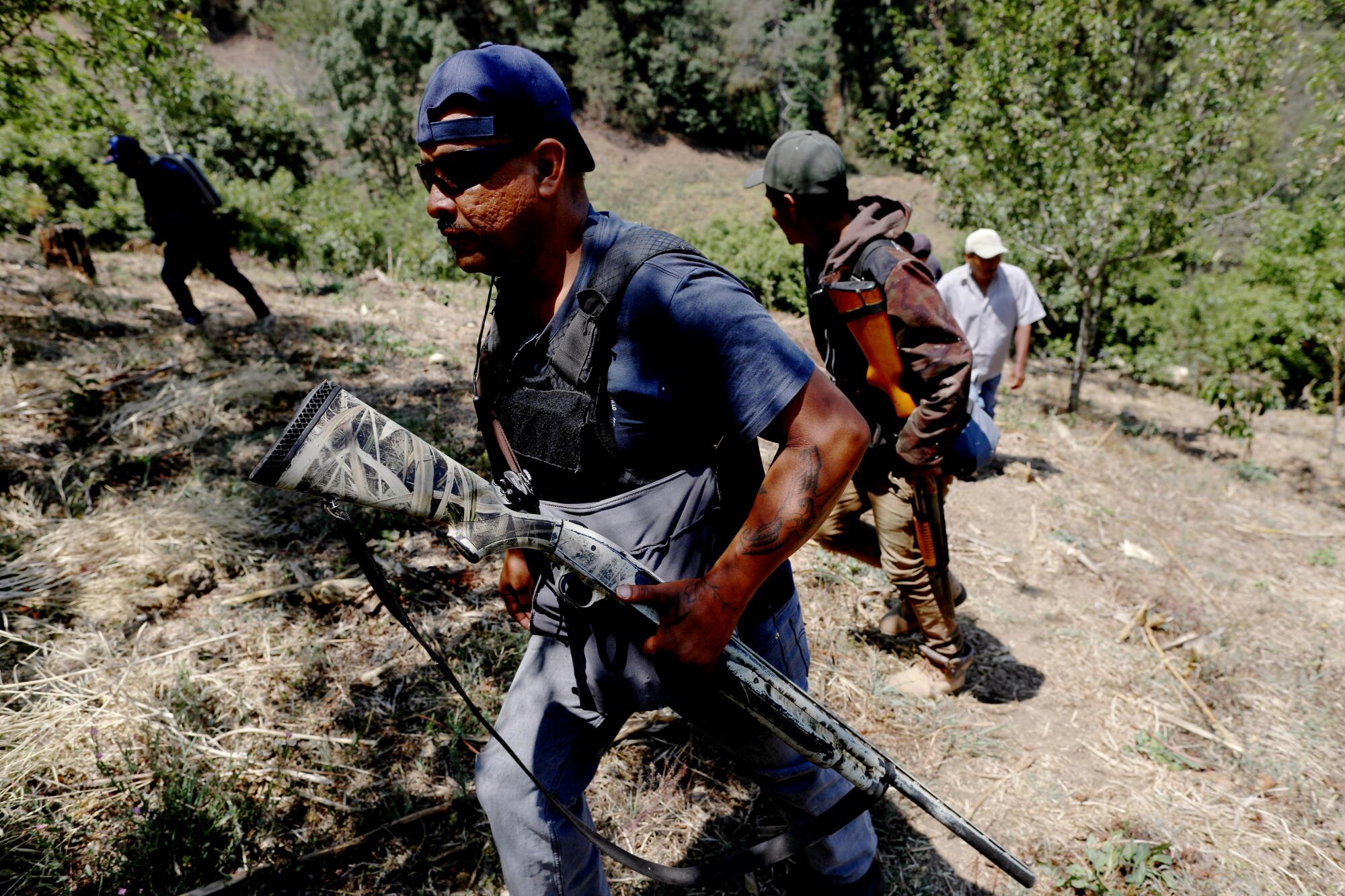
In the meantime, Alanis and his group — the United Front of Community Police of the State of Guerrero — have been steadily taking territory.
They say they are cleansing the countryside of predatory gangs, a mission that they acknowledge sometimes employs the same brutal tactics of their enemies.
‘We kill each other, and you send the bullets.’
— Salvador Alanis Trujillo, founder of the United Front of Community Police of the State of Guerrero, a vigilante group
They have incurred, and inflicted, many losses in a conflict that Alanis said can only be described as a “civil war.”
“The assassins that kill us are Mexican,” said Alanis, 40. “And the people we shoot are Mexican.”
As for the weapons, that’s another story. He pointed to the words stamped on the barrel of a Colt Match Target assault rifle slung across the chest of a teenage fighter: “HARTFORD, CONN, U.S.A.”
“We kill each other,” he said. “And you send the bullets.”

The only gun store in all of Mexico is located on a heavily guarded army base.
Before entering the Directorate of Arms and Munitions Sales on the outskirts of Mexico City, customers must undergo months of background checks and present six documents verifying their identity.
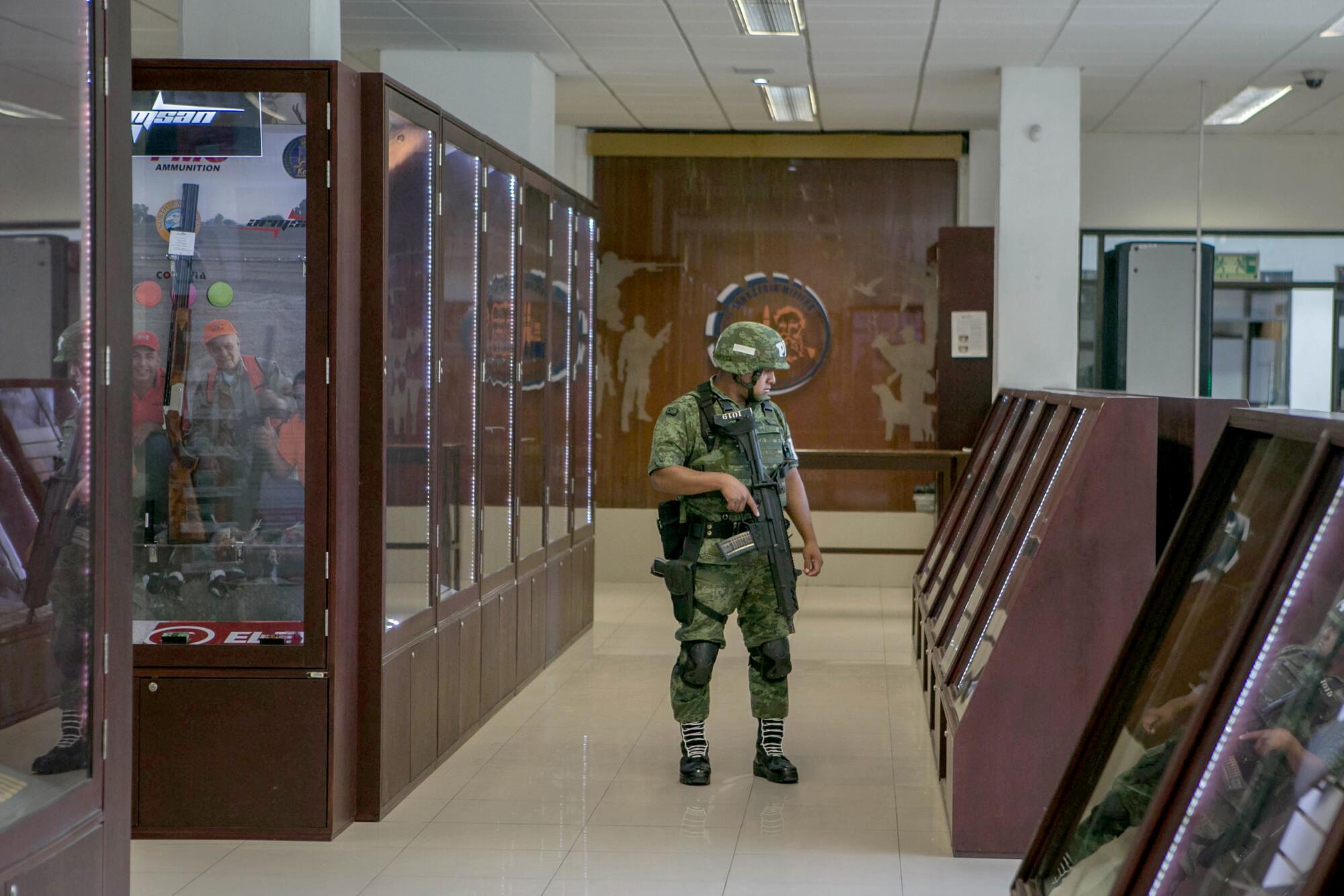
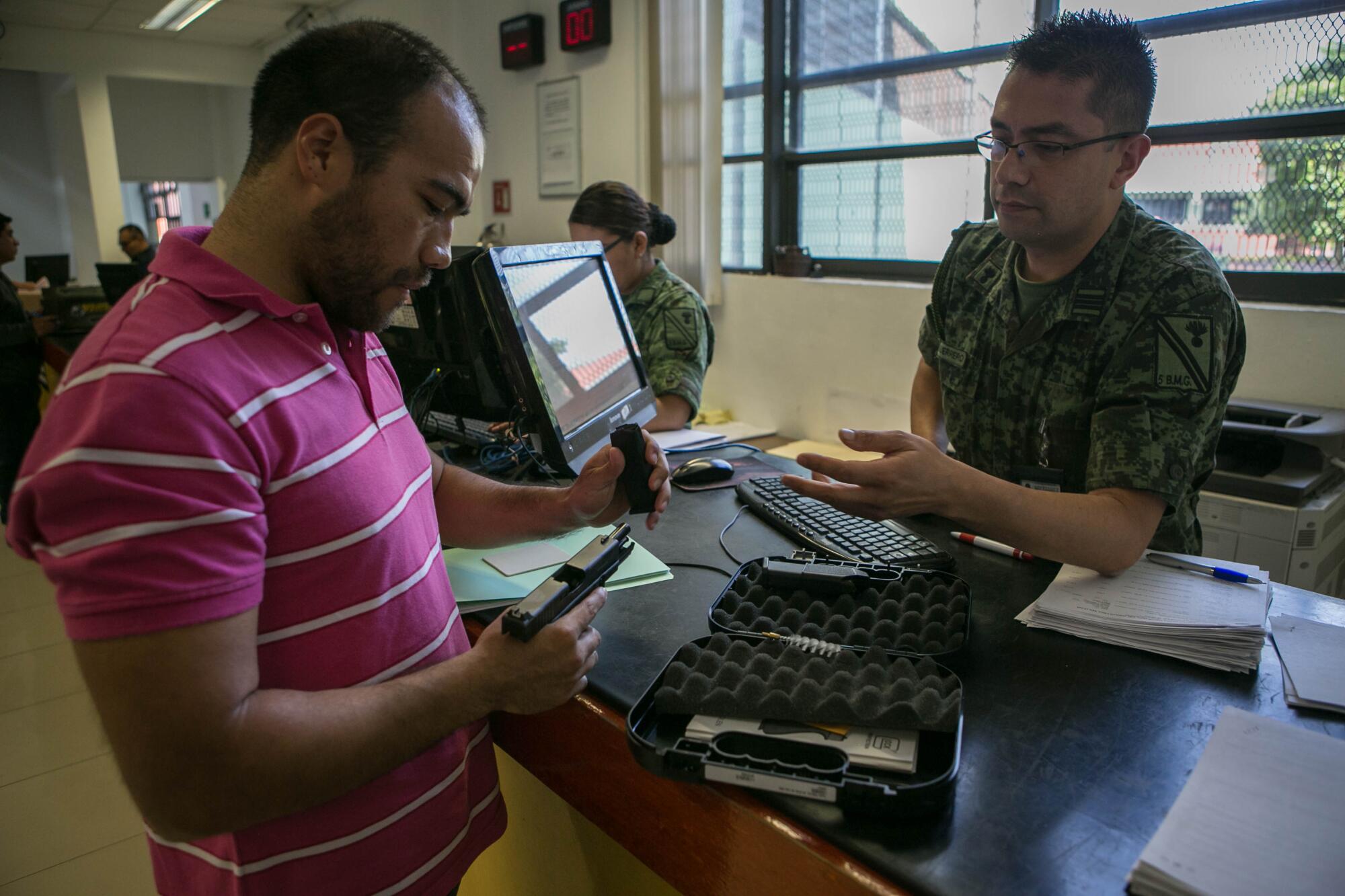
The process is so onerous that last year the store sold just 15,754 firearms. None were assault rifles, which are illegal here.
In contrast, an estimated 13.1 million guns were sold in the United States by tens of thousands of licensed firearms dealers. That includes readily available military-style rifles.
The exact number of firearms trafficked to Mexico is unknown, but in one of the few academic studies of the issue, researchers at the University of San Diego estimated that more than 750,000 guns were purchased in the United States between 2010 and 2012 to be smuggled into Mexico.
Data collected by the U.S. Bureau of Alcohol, Tobacco, Firearms and Explosives also make clear where criminals in Mexico are getting their firearms.
Of the 132,823 guns recovered at crime scenes in Mexico from 2009 to 2018, fully 70% were found to have originated in the U.S. — primarily in Southwest border states, most commonly Texas.
Most firearms trafficked to Mexico are bought legally at gun shows or stores by people known as “straw purchasers,” who then hand them off to cartels or middlemen.
Moving weapons across the border is simple. More than a million people and about $1.7 billion in commerce cross the border legally each day, and Mexico rarely checks goods heading south.
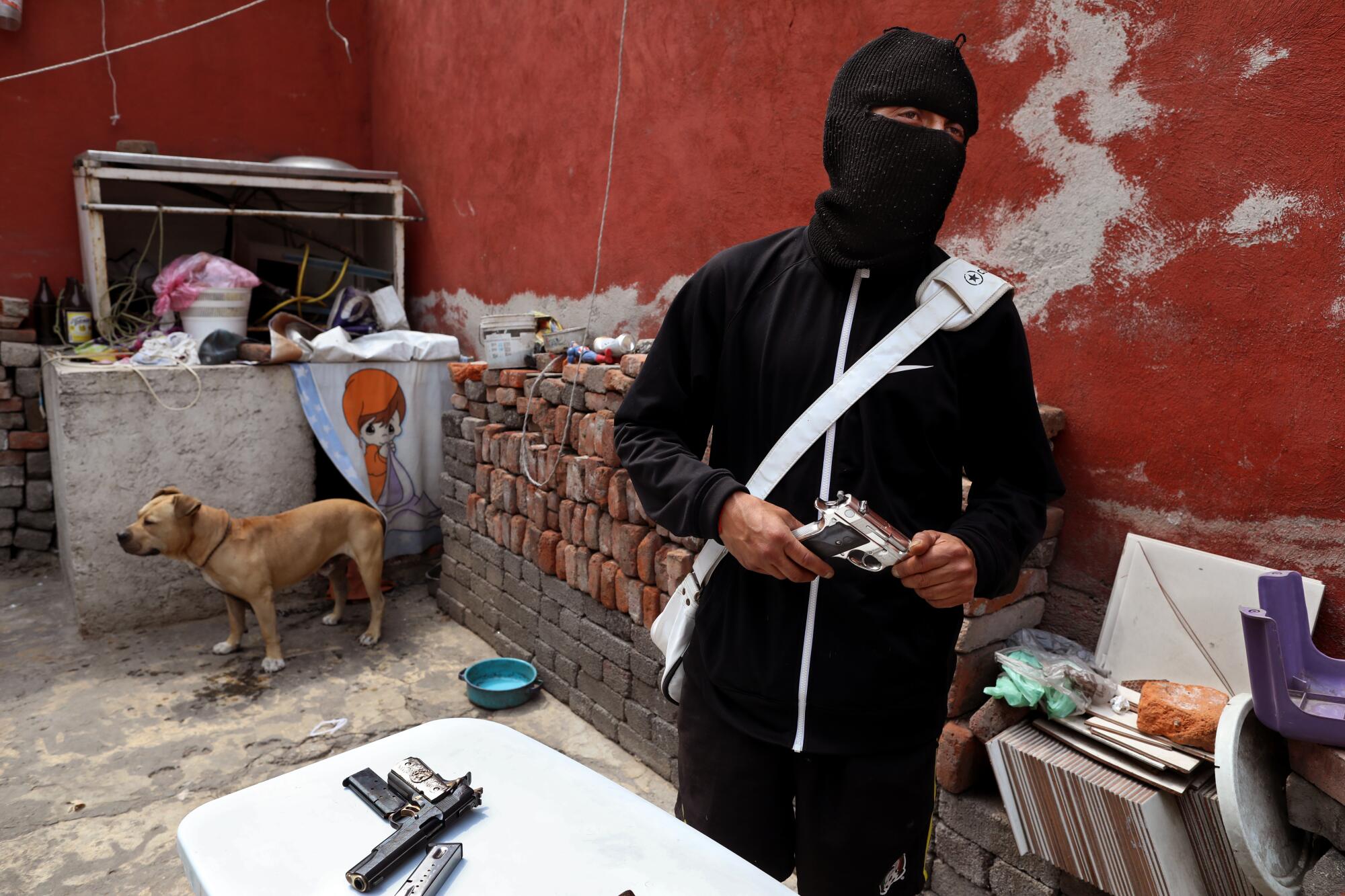
As a result, the black market for guns in Mexico is well stocked.
On a recent afternoon in Tepito, a crowded, crime-ridden neighborhood near downtown Mexico City, an arms dealer was at home preparing to make a sale. As he cleaned three of the guns he had recently acquired, his family members shuffled around the darkened kitchen, preparing lunch.
The dealer, who spoke on condition of anonymity, said he buys pistols and revolvers on the black market and resells them for up to $800. High-powered rifles such as AK-47s fetch up to $2,500.
A few blocks away, in Tepito’s bustling market, other entrepreneurs rent guns for around $50 a day.
The dealer said he got swept up in gang life as a teenager in the 1990s. Back then, people fought with knives or fists. “Now it’s bullets,” he said.
On occasion, he said, he has worked as a hired killer, charging $5,000 a hit.
He picked up a shiny Smith & Wesson pistol manufactured in Massachusetts that he said had been smuggled from the United States. Then he placed it in a white shoulder bag and headed out to meet his customer.
##
Gun control is one of the most divisive political issues in the United States, but the debate rarely considers how lax American gun laws have fueled violence in Mexico.
Experts, activists and Mexican officials trace the beginning of the arms race to a major change in U.S. gun regulations: the 2004 expiration of a congressional ban on high-powered assault weapons.
Overnight, any adult with a clean record could walk into a store in all but a few states that maintained their own bans and walk out with guns that in most of the world are reserved for military use.
The University of San Diego researchers found that U.S. gun dealers experienced an immediate rise in sales of guns destined for Mexico — and that by 2012 annual purchases were triple the pre-ban totals.
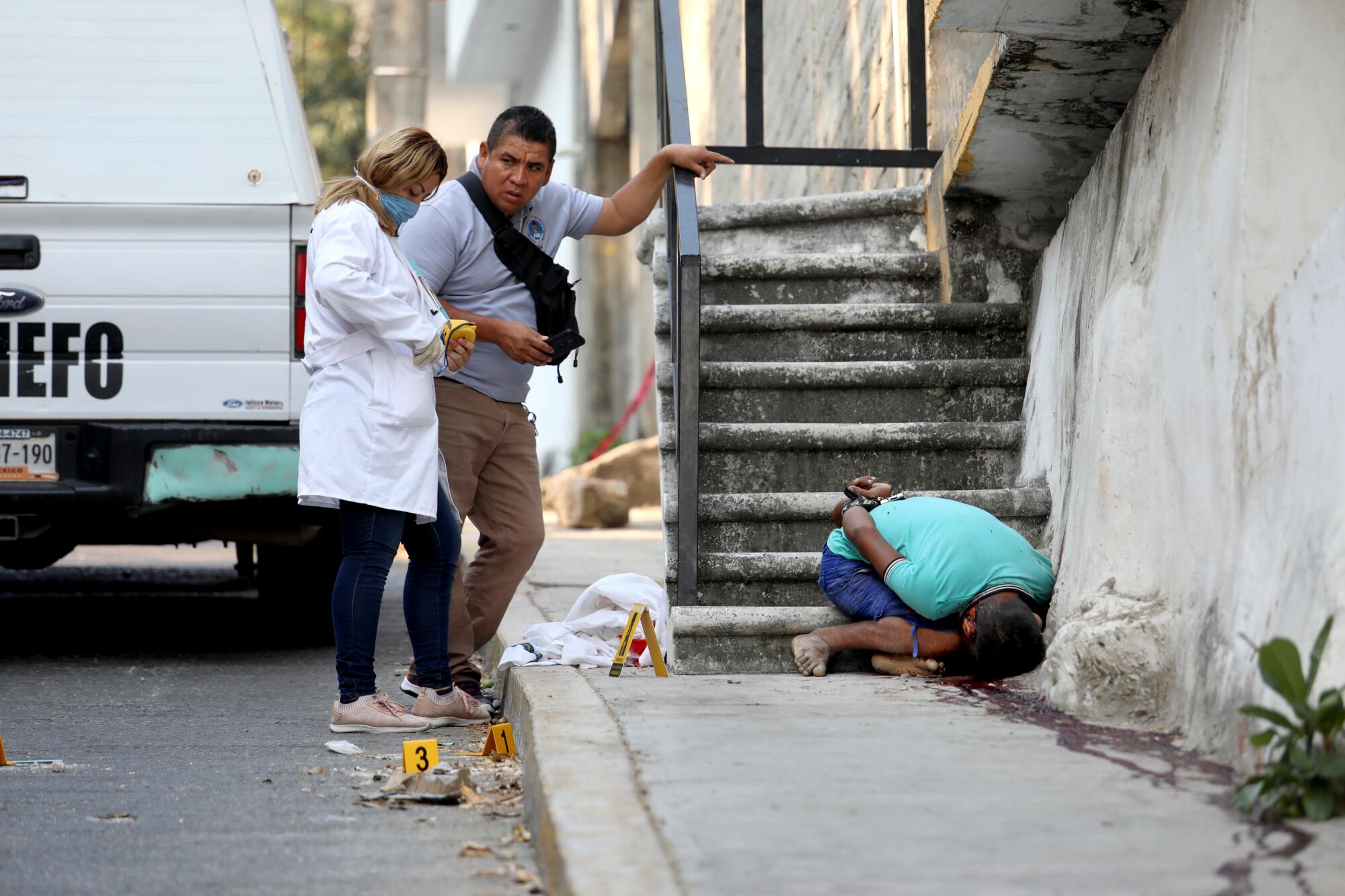
The increase came at a precarious time. Mexican drug traffickers had been openly clashing since 2000, when the long-ruling Institutional Revolutionary Party lost power and the cartels lost crucial political protection.
The massive influx of weapons added tinder to those conflicts.
In 2004, a quarter of Mexico’s homicides were committed with a gun. Today, guns are to blame in 72% of killings.
With more guns on the streets, “things got crueler,” said Jose Manuel Martinez Hernandez, a forensic scientist in the Guerrero state prosecutor’s office.
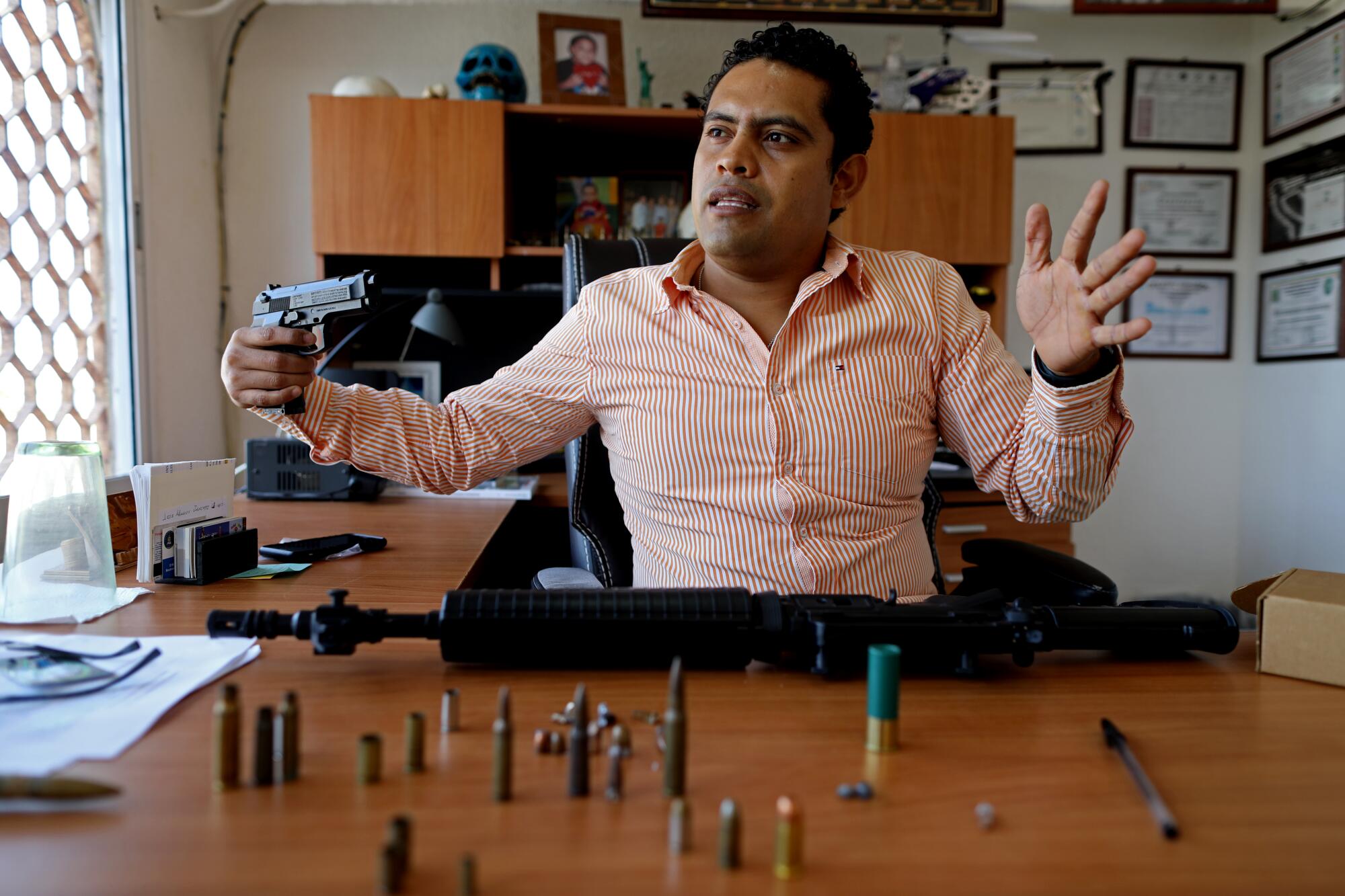
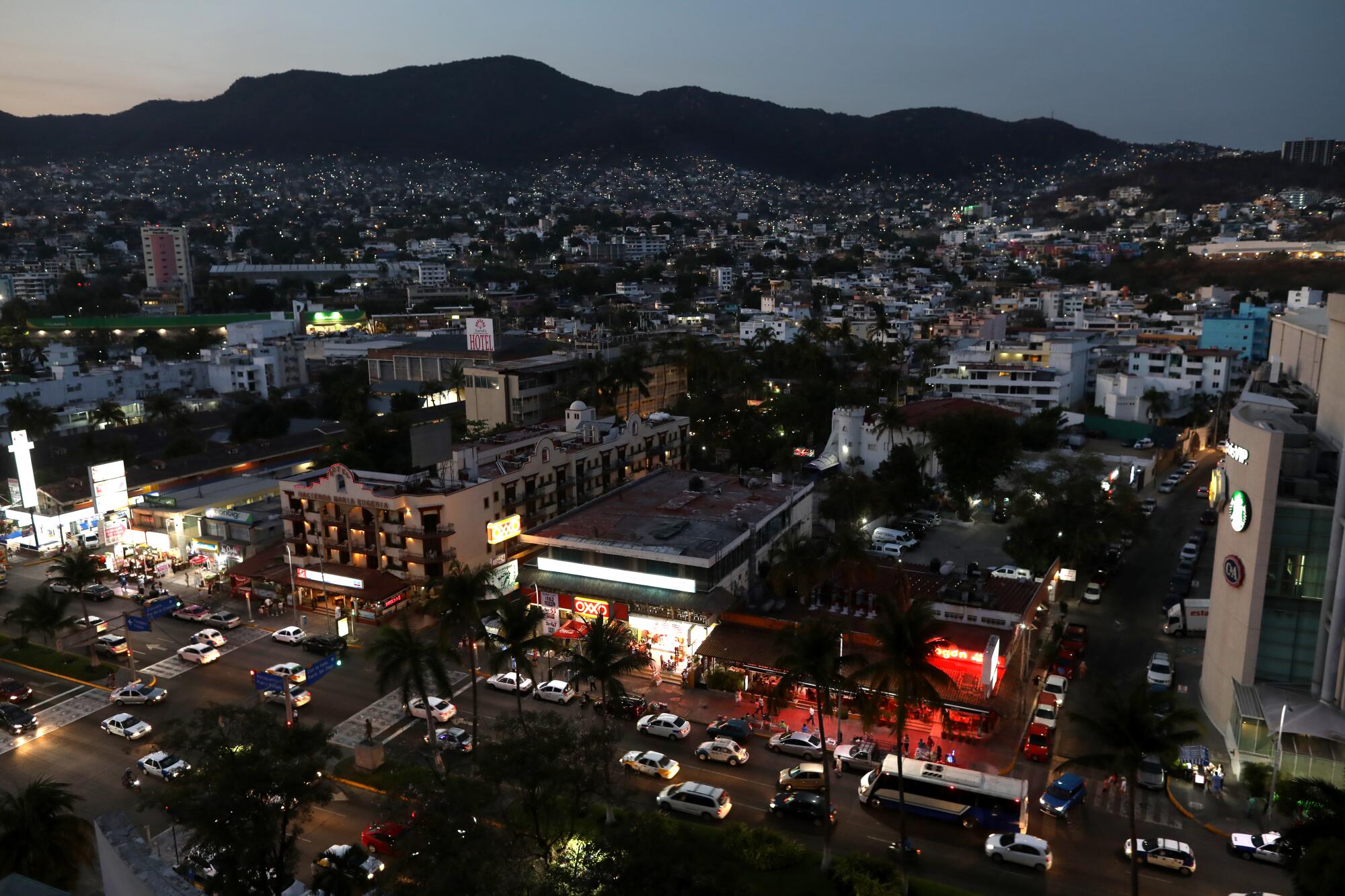
Martinez well remembers the shock he felt in 2006 when he was called to investigate a shootout in the seaside resort of Acapulco that many viewed as a inflection point in the violence.
Bullets had flown for nearly an hour at an intersection known as La Garita, leaving four drug traffickers dead and the street littered with casings from assault weapons. When Martinez turned over one body, he found eight grenades strapped to the man’s chest.
“These are weapons of war,” he said he thought.
Eventually, such scenes became normal, and Mexico’s most popular beach resort became known instead as one of the most violent cities on Earth.
##
By the time President Felipe Calderon was sworn into office in late 2006, he was facing growing pressure to do something about the violence.
At a dinner that year with U.S. Ambassador Antonio Garza, Calderon “expressed his grave concern over the security situation in Mexico,” according to diplomatic cables released by WikiLeaks.
Shortly after, Calderon deployed the first of what would be tens of thousands of soldiers and marines to fight Mexico’s drug traffickers — and asked President George W. Bush for America’s help.
The resulting agreement was the Merida Initiative, a multibillion-dollar security partnership based on a “shared responsibility” to combat trafficking.
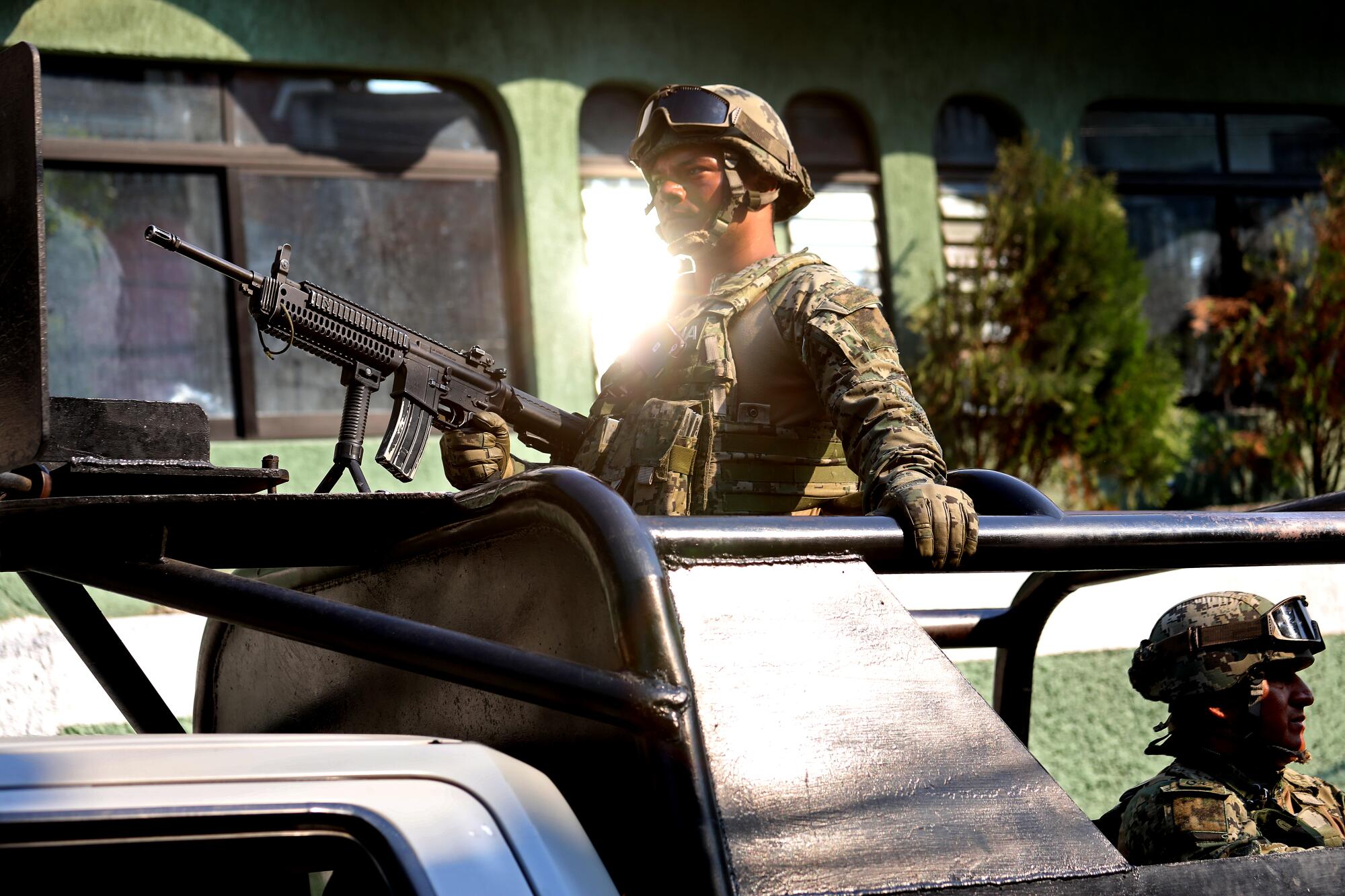
Under the program, the United States provided Black Hawk helicopters and surveillance planes and training in counterinsurgency tactics. At the same time, Mexico began importing record numbers of legal weapons for the army and police.
U.S. exports of firearms, ammunition, explosives and gun parts to Mexico rose to roughly $40 million a year, according to the advocacy group Stop U.S. Arms to Mexico. The Mexican army also vastly increased its own production of firearms.
But the influx of weapons had an unintended consequence: A better equipped military and police spurred the cartels to improve their arsenals, primarily by smuggling even more weapons from the U.S.
Gangs such as the Zetas, which was founded by deserters of the Mexican army’s special forces, became known for their enormous caches of weapons, including homemade “narco tanks” designed to withstand grenade attacks and machine gun fire.
John Lindsay-Poland, the director of Stop U.S. Arms to Mexico, said the arms buildup has trapped Mexico in a perverse cycle.
“If you go after armed violence with armed violence, you will increase armed violence,” he said.
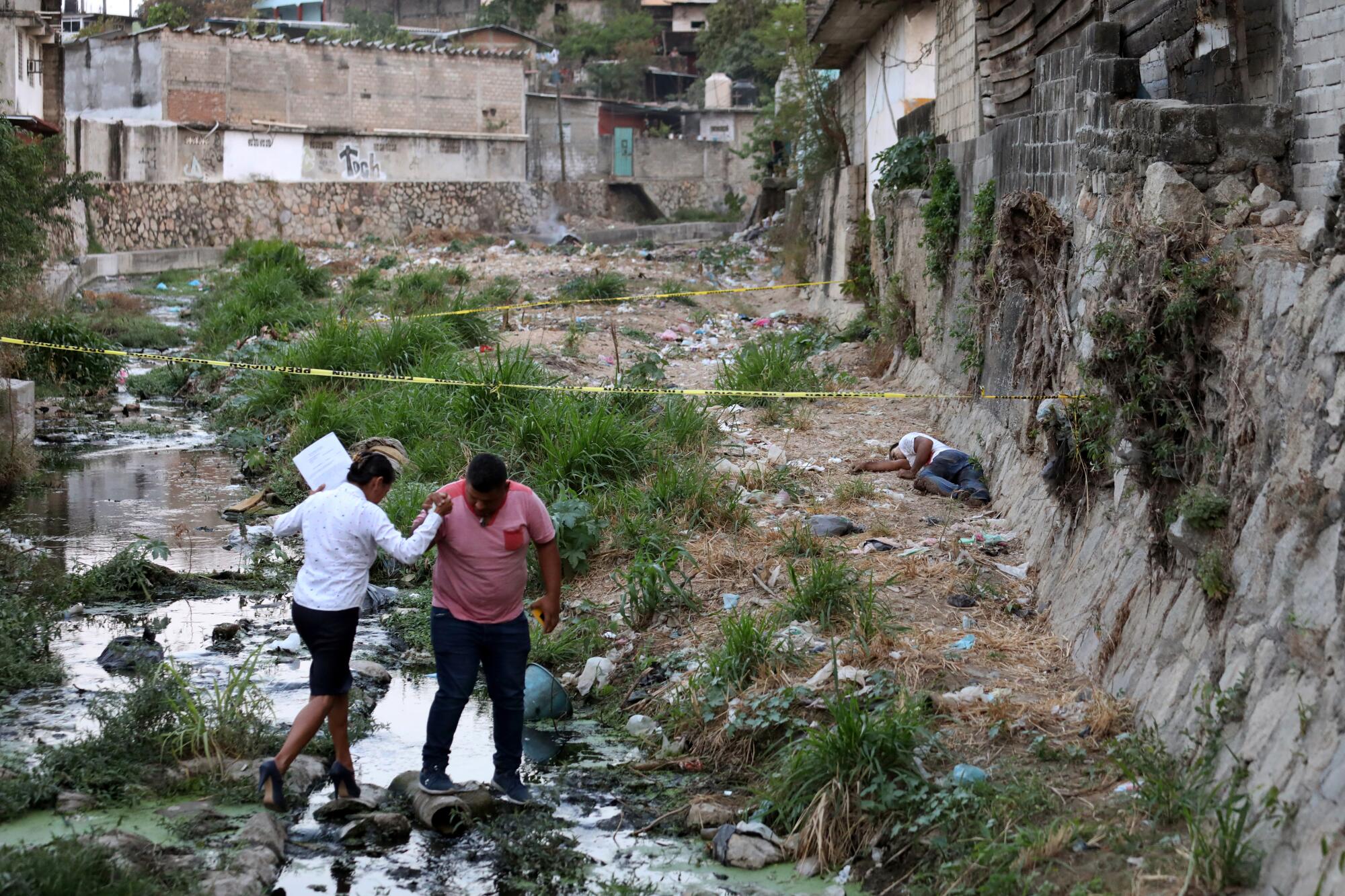
By 2012, the year Calderon left office, he was begging the U.S. to reinstate the assault weapons ban.
“Many of these guns are not going to honest American hands,” he said in an address that year to the U.S. Congress. “Instead, thousands are ending up in the hands of criminals.”
But the U.S. gun lobby prevailed in opposing a reinstatement of the ban.
Calderon was frustrated, too, with a botched U.S. law enforcement operation dubbed Fast and Furious that allowed weapons from the U.S. to pass into the hands of suspected gun smugglers in an attempt to identify top cartel members in Mexico. The ATF, which ran the operation, lost track of hundreds of weapons, some of which were used to kill.
Eight months before he stepped down because of term limits, Calderon erected a massive billboard in the border city of Ciudad Juarez angled toward Texas.
The letters, formed using crushed guns seized by authorities, spelled out in English: “No more weapons.”
##
Meanwhile, criminals were discovering another source of firearms: the Mexican police.
More than 22,000 firearms purchased by state and federal police were reported lost or stolen between 2000 and 2015, according to Mexican military documents.
In Guerrero, police reported that 1 in 5 of the firearms they acquired between 2010 and 2016 were lost or stolen.
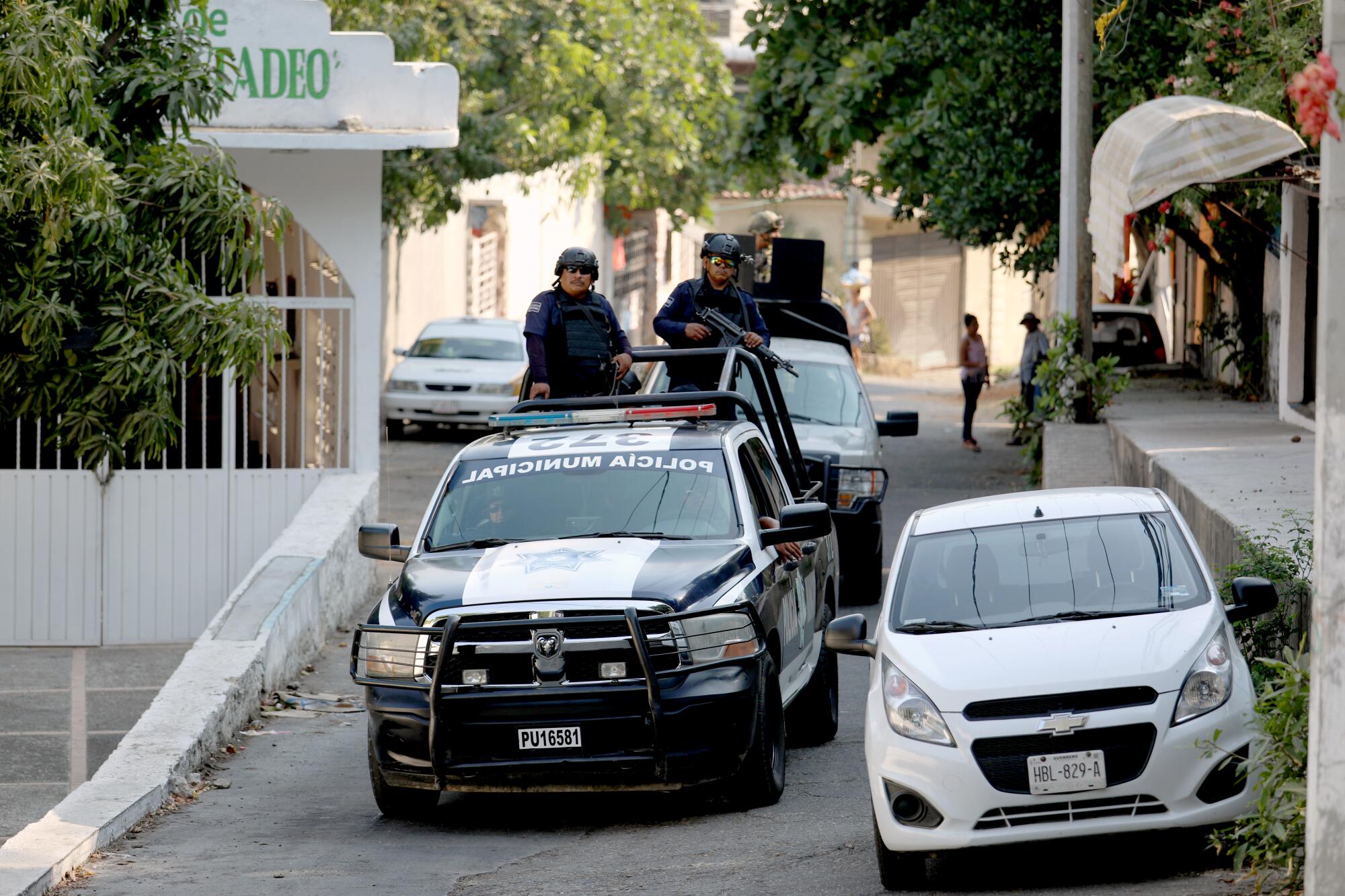
Last year, the municipal police force in Acapulco was temporarily disarmed by federal authorities after its officers could not account for 20% of their armament. State officials said the force had been infiltrated by organized crime.
Police have also been caught selling guns seized by authorities.
In Tepito, the arms dealer dialed one of his regular suppliers: a local police official who sells weapons recovered from crime scenes to neighborhood criminals.
“Commander,” the dealer sang cheerfully into the phone. “Do you have what I asked for?”
“Not yet,” the commander said. Then he began talking about other guns that were available for sale.
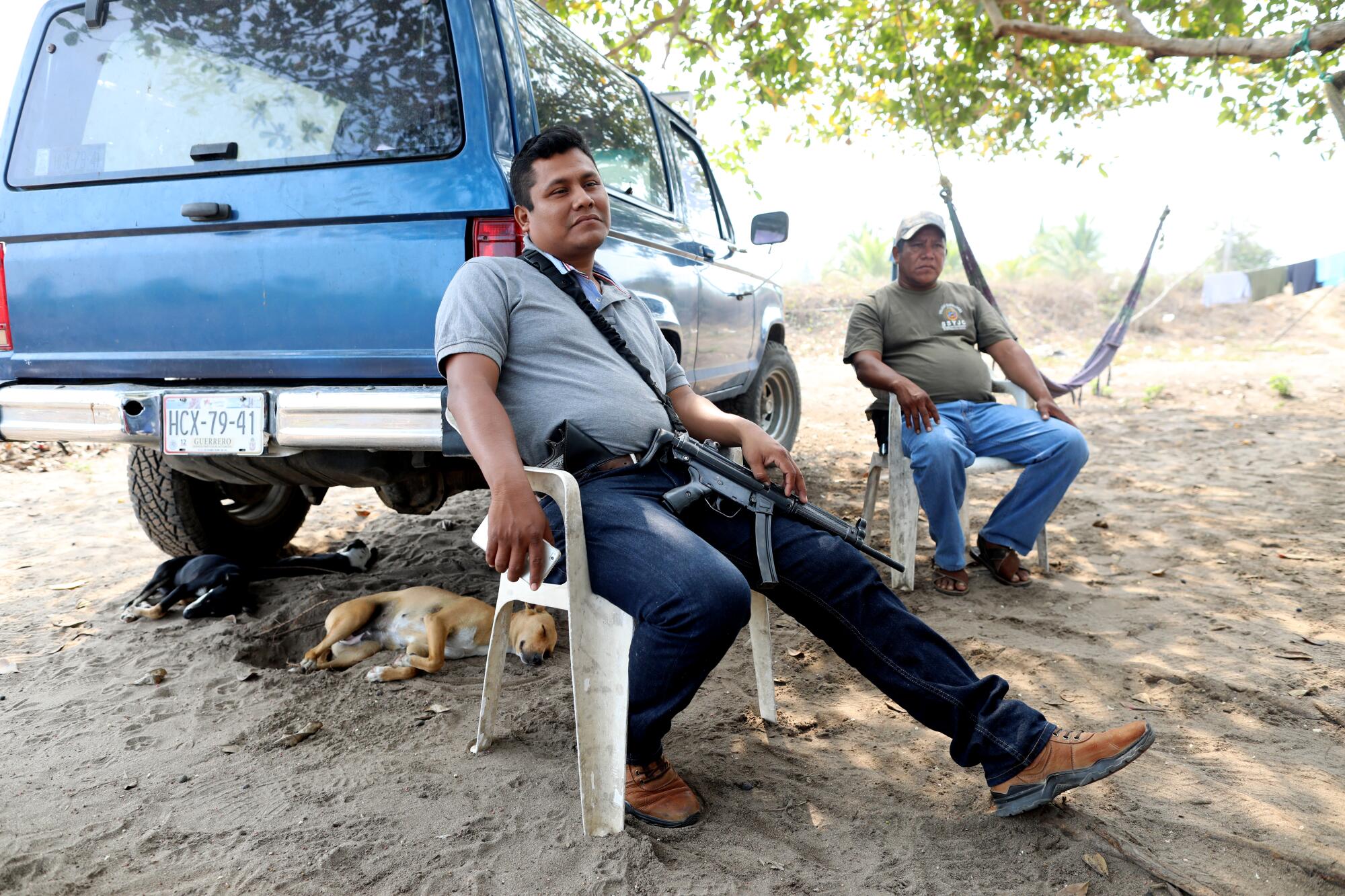
Enrique Peña Nieto, who succeeded Calderon as president, continued to hit on the issue of American guns in conversations with his U.S. counterparts. Yet seizures of illegal weapons fell precipitously during his six-year term, in part because he largely abandoned a Calderon-era push to inspect more vehicles heading south into Mexico.
Current Mexican President Andres Manuel Lopez Obrador has vowed to bring back inspections. And in July, the foreign secretary, Marcelo Ebrard, said Mexico’s military would coordinate with U.S. authorities to launch anti-gun-smuggling operations along the border.
At the same time, in Guerrero and other parts of Mexico where the government has lost control, authorities often overlook flagrant violations of gun laws, and in some cases have been known to supply vigilantes with weapons.
Alanis said his community police group purchases weapons and bullets from members of Mexico’s armed forces. He said he pays a former marine to train his men how to shoot.
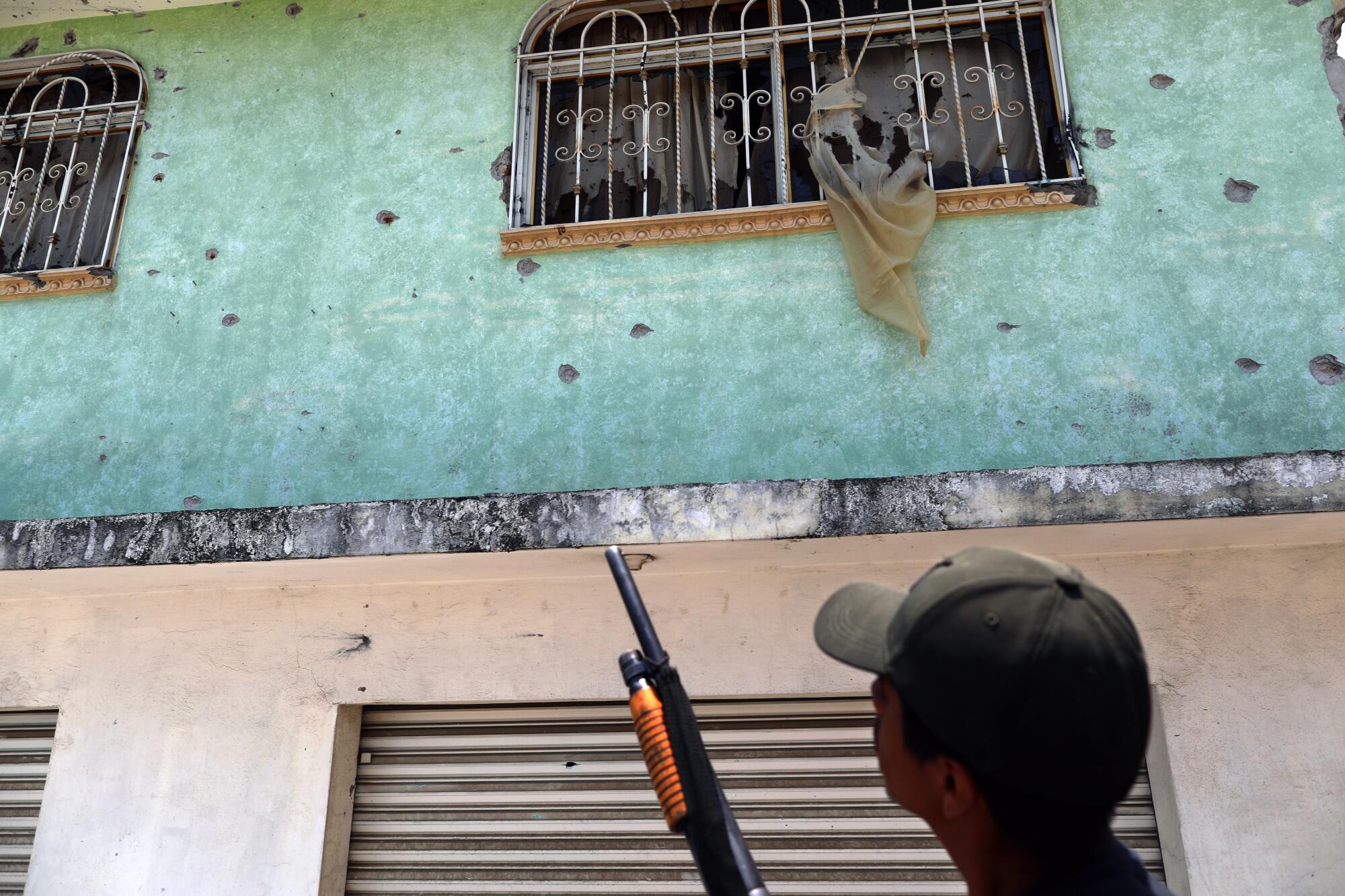
Last fall, the group that Alanis directs laid siege to a poppy-growing town called Filo de Caballos. The confrontation lasted seven hours, killed seven people and left homes and stores pocked with hundreds of bullet holes. To reach the town today, visitors must past through multiple checkpoints patrolled by armed men.
Alanis said his group freed the small mountain hamlet from a drug gang called the Cartel del Sur, which he asserted had been extorting from residents and controlling local heroin production for years.
Just as Alanis had done five years before in Ocotito, hundreds of residents fled the violence. Some claimed that Alanis had taken over the town because he wanted to dominate the poppy industry himself, as well as access to lucrative local mines.
Alanis doesn’t own up to illegal activity, but also doesn’t deny it. He admits that his crusade has at times been guided more by vengeance than by principle.
His wife left him several years ago. Now Alanis sleeps at his group’s base in Filo de Caballos in the bullet-pocked former headquarters of the town’s municipal government.
He and his troops rest in shifts. When they do finally lie down, it is always with a weapon by their side.
“Instead of embracing your woman, you embrace your gun.”
The synthetic drug is the leading culprit in the U.S. opioid epidemic. Most comes from Mexico, where traffickers have embraced it over heroin.
Cecilia Sanchez in the Mexico City bureau contributed to this report.
More to Read
Sign up for Essential California
The most important California stories and recommendations in your inbox every morning.
You may occasionally receive promotional content from the Los Angeles Times.
